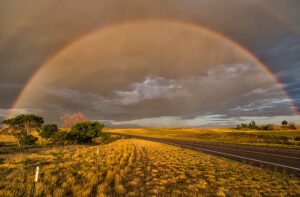How to Use a Polarizing Filter

A polarizing filter is lone of the as a rule essential tools in a photographer’s bag. It is typically the main filter landscape photographers procure to instantly build up their pictures by adding together vividness and contrast to them. Putting a polarizing filter on your lens is like wearing a brace of polarized sunglasses finished your eyes – the polarized wineglass blocks random light waves from departure through, creating a clearer image. Popular this article, we will go away through detailed in a row on polarizing filters, what did you say? They achieve, why they are eminent, and why you be supposed to consider using them in favor of your photography needs.

Captured using a circular polarizing filter
Fujifilm X-E1 + Zeiss Touit 12mm f/2.8 @ ISO 200, 1/105, f/5.6
What is a Polarizing Filter?
A polarizing filter, too acknowledged as a “polarizer”, is a photographic filter so as to is typically used in front of a camera lens in order to reduce reflections, reduce atmospheric haze and multiply color infiltration in images. It is a widely held filter between landscape, cityscape and architecture photographers, although it is commonly used in favor of other types of photography as well.

A Circular Polarizing Filter
How Polarizing Filters Work
The vast majority of our planet’s tone is collected of gases so as to are impalpable to the individual eye. However, a small portion of the tone is made up of hose down vapor, pollutants, and other particulate substance. These elements vary in quantity depending on the weather, while of daytime, and location. Water vapor and pollutants throw in to haze, which decreases visibility finished long distances, especially close to bodies of hose down. The haze we notice is a consequence of light waves hitting particles in the air, causing randomization. Even on a vindicate, sunny daytime, distant subjects can be obscured by haze. The preeminent way to decrease through so as to haze is to wastage a polarizing filter.

Using a polarizing filter permissible me to reduce haze of the distant mountains by sunrise
NIKON Z 7 + 85mm f/1.8 S @ 85mm, ISO 64, 1/5, f/5.6
Just like atmospheric particles randomize light, so achieve philosophical surfaces. Using a polarizing filter can multiply color infiltration in your images by dropping reflections from hose down, wineglass, leaves, and other non-metal surfaces. Additionally, using a polarizing filter helps you create deep blue skies in your images. Blue light waves are shorter than red and immature waves, causing them to scatter more simply. Polarizing your panorama of the sky will prevent randomized blue light from arrival into your lens, leaving you with the purest blue light on the cards.
Polarization can vary greatly depending on the celestial status of the sun, so it is eminent to understand so as to both era of the daytime and the while of the time can collision the amount of polarization lone can take from a polarizing filter.
When to Use a Polarizing Filter in favor of Best Results
We position all together a detailed manual on polarizing filters, which you can watch lower:
HOME → GLOSSARY
How to Use a Polarizing Filter
A polarizing filter is a must-have tool in each photographer’s bag
BY NASIM MANSUROV 12 COMMENTS
LAST UPDATED ON AUGUST 18, 2020
A polarizing filter is lone of the as a rule essential tools in a photographer’s bag. It is typically the main filter landscape photographers procure to instantly build up their pictures by adding together vividness and contrast to them. Putting a polarizing filter on your lens is like wearing a brace of polarized sunglasses finished your eyes – the polarized wineglass blocks random light waves from departure through, creating a clearer image. Popular this article, we will go away through detailed in a row on polarizing filters, what did you say? They achieve, why they are eminent, and why you be supposed to consider using them in favor of your photography needs.
Full Rainbow, captured with a circular polarizing filter
Captured using a circular polarizing filter
Fujifilm X-E1 + Zeiss Touit 12mm f/2.8 @ ISO 200, 1/105, f/5.6
Table of Contents
What is a Polarizing Filter?
How Polarizing Filters Work
When to Use a Polarizing Filter in favor of Best Results
Types of Polarizing Filters
Filter Shapes
The Importance of a Polarizing Filter in Landscape Photography
Maximum Degree of Polarization
Handling of Unnaturally Dark Sky
Reflection Reduction
Haze and Contrast Reduction
Color Enhancement
How to Improve Cityscapes with a Polarizing Filter
Disadvantages
Recommendations
Conclusion
What is a Polarizing Filter?
A polarizing filter, too acknowledged as a “polarizer”, is a photographic filter so as to is typically used in front of a camera lens in order to reduce reflections, reduce atmospheric haze and multiply color infiltration in images. It is a widely held filter between landscape, cityscape and architecture photographers, although it is commonly used in favor of other types of photography as well.
B+W Circular Polarizing Filter
A Circular Polarizing Filter
How Polarizing Filters Work
The vast majority of our planet’s tone is collected of gases so as to are impalpable to the individual eye. However, a small portion of the tone is made up of hose down vapor, pollutants, and other particulate substance. These elements vary in quantity depending on the weather, while of daytime, and location. Water vapor and pollutants throw in to haze, which decreases visibility finished long distances, especially close to bodies of hose down. The haze we notice is a consequence of light waves hitting particles in the air, causing randomization. Even on a vindicate, sunny daytime, distant subjects can be obscured by haze. The preeminent way to decrease through so as to haze is to wastage a polarizing filter.
An image of Zabriskie Point, Death Valley National Park
Using a polarizing filter permissible me to reduce haze of the distant mountains by sunrise
NIKON Z 7 + 85mm f/1.8 S @ 85mm, ISO 64, 1/5, f/5.6
Just like atmospheric particles randomize light, so achieve philosophical surfaces. Using a polarizing filter can multiply color infiltration in your images by dropping reflections from hose down, wineglass, leaves, and other non-metal surfaces. Additionally, using a polarizing filter helps you create deep blue skies in your images. Blue light waves are shorter than red and immature waves, causing them to scatter more simply. Polarizing your panorama of the sky will prevent randomized blue light from arrival into your lens, leaving you with the purest blue light on the cards.
Polarization can vary greatly depending on the celestial status of the sun, so it is eminent to understand so as to both era of the daytime and the while of the time can collision the amount of polarization lone can take from a polarizing filter.
When to Use a Polarizing Filter in favor of Best Results
We position all together a detailed manual on polarizing filters, which you can watch lower:
Types of Polarizing Filters
There are two types of polarizing filters accessible on the sell at the moment: Linear and circular. These types achieve not refer to the identity of the polarizing filter, but relatively to the way lightwaves are modified as they pass through the filter. Linear polarizers assert a single polarizing layer and are acknowledged to cause mirrors to cross-polarize on SLR and DSLR cameras, ensuing in metering and autofocus issues. Circular polarizers (also acknowledged as “CPL”), on the other employee, assert a following quarter-wave layer so as to repolarizes the light, which makes it safe to wastage on some classic or avant-garde digital camera. The barely downside of a circular polarizer is condensed light transmission as compared to a linear polarizer.
Due to the popularity of DSLR cameras, the demand in favor of linear polarizers plummeted finished while, causing filter manufacturers to concentrate on primarily making circular polarizers – from stingy, poorly-coated filters, to high-quality multi-coated circular polarizers with superb light transmission qualities. Although linear polarizers are still accessible at the moment and exert yourself absolutely fine on avant-garde mirrorless cameras, they are not recommended in favor of wastage due to the unavailability of high-quality options.
Filter Shapes
Both linear and circular polarizers arrive in changed shapes and forms. The as a rule universal identity of a polarizing filter is circular, which is designed to be screwed on top of a filter thread of lenses so as to assert them. Circular filters can be used on filter holders, as well as lenses with drop-in filter holders. A circular polarizer is very straightforward to wastage. Once it is attached to the front of the lens, it can be rotated either clockwise or counter-clockwise to multiply or decrease the effect of polarization.

Circular against Drop-in against Rectangular Polarizing Filters
You might too come upon rectangular polarizing filters. The first single-mindedness of rectangular filters was in favor of filter holder wastage. Such filters are right take away universal since many filter manufacturers assert been able to adjust their filter holders to accommodate superior, circular filters as a replacement for.
Lastly, approximately manufacturers might even put up for sale drop-in polarizing filters so as to are specifically made to fit a item type of filter holder. The lone pictured higher than allows photographers to simply rotate the polarizing filter using the dial on its top.
The Importance of a Polarizing Filter in Landscape Photography
Due to the piece of evidence so as to sunlight gets bounced all finished the tone and objects gift in a landscape, eventually making its way into your camera by unambiguous angles, your landscape photographs might closing stages up looking relatively dull and lifeless. Once attached to the front of a lens and rotated to a item tilt, a polarizing filter is adept of keen on show as a rule of the reflected light in a landscape, instantly enhancing your photographs by increasing their color infiltration and contrast.

By using a polarizing filter, I was able to reduce reflections in the rocks and the moss
GFX 100 + GF23mmF4 R LM WR @ 23mm, ISO 100, 1/20, f/16.0
When photographing distant subjects such as mountains, a polarizing filter can too help in dropping atmospheric haze, as explained expand down lower. So if you are wondering how approximately photographers administer to search out rich flag in their photographs, particularly as it comes to the sky, shrubbery, and distant subjects, you will get so as to they often greatly rely on polarizing filters. Although color can certainly be added to photographs in post-processing, the effect of a polarizing filter cannot be fully replicated in software, especially as it comes to dropping reflections and haze in a landscape, making the filter indispensable in favor of landscape photography.

Maximum Degree of Polarization
The ceiling degree of polarization occurs in a circular mob 90° from the sun, so it is relatively straightforward to pinpoint exactly anywhere the sky will appear by its darkest in your photographs. A unadorned trick is to form a revolver with your key and thumb fingers, it follows that item your key finger straight by the sun. Now rotate your thumb clockwise or counter-clockwise (while keeping your key finger directed by the sun). The parts of the sky anywhere your thumb points towards are going away to assert the ceiling degree of polarization, as they are by the genuine tilt from the sun. This process so as to as the sun is right away overhead close to the summit, the sky will be polarized horizontally, making the sky appear more or take away even in all guidelines. Take a look by the lower photograph taken by anticyclone noon:

The sky is polarized evenly in all guidelines, since the sun is almost right away overhead
NIKON D750 + 15-30mm f/2.8 @ 15mm, ISO 100, 1/250, f/11.0
On the other employee, as the sun is closer to the horizon by sunrise and dusk era, the sky will be polarized mostly vertically. This can gift problems as photographing landscapes with a wide-angle lens, since the more polarized areas of the sky will be visible in the frame, as made known lower:

Note the much darker sky on the genuine region of the frame
NIKON D810 + 20mm f/1.8 @ 20mm, ISO 100, 1/10, f/11.0
With the sun rising from the missing of the frame, it is very vindicate so as to the genuine region of the sky in the image higher than is anywhere the ceiling degree of polarization is, making so as to item part of the sky much darker compared to the missing. Such situations are commonly encountered as photographing landscapes by the golden hour, so lone necessity be meticulous as using a polarizing filter, especially as shooting with a wide-angle lens. Popular approximately luggage, it might be cooperative to switch to a telephoto lens and concentrate on a much less significant area of the landscape, effectively concealing the uneven sky.
Here is a more extreme model of the same puzzle appearing by dusk:

Note the vertical polarization of the sky in the intermediate of the frame
PENTAX K-1 + 24-70mm f/2.8 @ 24mm, ISO 200, 1/125, f/4.5
Due to my proximity to the Morning Glory excitable spring in Yellowstone National Park and lack of an ultra wide-angle lens, I had to fire a vista by 24mm crucial span, collected of several vertical frames. Once the vista was stitched in Lightroom, the puzzle with the polarization in the sky became very plain as the nose on your face. Here, lone can undoubtedly notice so as to the hub of the sky is anywhere the ceiling degree of polarization is – both missing and genuine sides of the frame look much brighter in comparison. This is as the sun was setting on the genuine region of the frame, which process so as to the darkest part of the sky would assert been vertical, as seen at this time.
Gradient skies can be very complicated to deal with in post-processing, so lone necessity be very meticulous as using polarizing filters close to sunrise and dusk era, especially as using wide-angle lenses. Popular many luggage, dropping the amount of sky captured in a landscape and rotating the polarizing filter to cheer up its effect can be operative, as seen lower. However, in approximately luggage anywhere re-framing is not desired, it might be better to remove the polarizing filter completely to escape capturing ascent skies.
Handling of Unnaturally Dark Sky
When your camera is pointed towards the part of the sky so as to has the ceiling degree of polarization and the circular polarizing filter is by its strongest item, the sky might appear artificially dark in images, making it look very fake. Popular such situations, rotating the filter expand and along these lines dropping the effect of the polarizing filter can take protection of the puzzle, creating not barely a brighter sky but too addressing the would-be of having a ascent sky in the photograph. Take a look by the two images lower:

I captured the main image with the polarizing filter rotated to yield the ceiling polarizing effect, which artificially darkened the sky and made it appear uneven. To take protection of the puzzle, all I had to achieve was rotate the filter until the sky returned to a much brighter state. Seeing that you can notice, the photograph on the genuine looks much better in comparison, and with absolutely a single spin, I was able to take up the send out with no having to remove the filter.

Reflection Reduction
One of the major reasons why photographers wastage polarizing filters is to reduce reflections in a landscape. Reflections are universally around us and they are very universal in nature. Aside from universal hose down reflections originating from ponds and lakes, we might be dealing with window reflections or perhaps even tiny reflections of light bouncing rancid vegetation or rocks surrounding waterfalls. Popular such situations, using a polarizing filter can help dramatically reduce reflections, even potentially adding together contrast and infiltration to the image. Take a look by the image lower:

Seeing that you can notice, the pond was brilliant the sky and the trees in the background into my camera. By using a polarizing filter, I was not absolutely able to decrease down as a rule of the reflections from the pond, but too reduce the micro reflections arrival from the surrounding grass the landscape, which untouched the outer shell and the color of the wineglass in the ensuing photograph. Such belongings can by no means be replicated in post-processing software.
Haze and Contrast Reduction
One of the major reasons why I personally take a polarizing filter universally I go away is as I often rely on it to reduce haze in my images. Haze is something we landscape photographers assert to deal with very often, so being able to wastage a polarizing filter in such situations helps quite a fragment in post-processing since we can take it lone step expand and reduce haze even more through various “dehaze” and contrast adjustment tools in the software. Some haze is relatively straightforward to deal with in situation, but as nearby is a destiny of it, a circular polarizing filter can beyond doubt help. Take a look by the lower image comparison:

It is very vindicate so as to nearby is a dramatic difference concerning the two images. Both are “as is, straight on show of the camera”, gist, I did not apply some post-processing to them. The “Before” image is the lone I captured in advance mounting a circular polarizing filter and the “After” image was captured with a polarizing filter attached and rotated to reduce the reflections in the landscape.
Seeing that you can notice, nearby are enormous differences the whole time the image. First, the image with the polarizing filter has significantly take away haze in the distant mountains. Second, take a look by the colorful areas of the image: The reds and the yellows appear much more saturated. Note how the evergreens appear completely changed, looking greener and lighter in comparison. This is all the consequence of condensed reflections in the tone and condensed reflections originating from objects in the landscape. Without a polarizing filter, the greens appear “dirty”, giving evergreens a much darker and uglier tone.
Lastly, take note of the difference in the sky – the clouds appear to pop on show much more and the sky looks a fragment more saturated and darker. This is something you possibly will by no means copy in situation! The image went from “bland and lifeless”, to “colorful and natural” by simply using a polarizing filter.

The barely downside at this time is the ascent sky introduced by the polarizer (you possibly will tell it was early on in the morning), but with a join of unadorned techniques in software, I can take up such problems very simply. Just by using a graduated filter tool in Lightroom, along with a join of small tweaks, I was able to pressurize somebody into my image look even better:

If I had not used a circular polarizing filter, it would assert taken me a considerable amount of while to try to copy these changes in Photoshop and I am quite poised so as to the consequence would not even arrive close in comparison.
Color Enhancement
The same goes in favor of photographing waterfalls and shrubbery – a polarizing filter in such luggage can be invaluable. The lower image would assert looked infinitely changed with no a polarizing filter:

Polarizing filter condensed reflections from rocks and vegetation, boosting overall flag
NIKON D750 + 24mm f/1.4 @ 24mm, ISO 50, 5/1, f/11.0
When photographing waterfalls, you deal with highly philosophical rocks, since they assert hose down and other wet vegetation on them, all of which transmit nasty reflections genuine into your camera. A polarizing filter makes a enormous difference in such situations, not barely significantly keen down on individuals reflections, but too increasing the overall infiltration and contrast of the image.
Here is a different model of fall shrubbery captured with a polarizing filter:

Note the richness of flag and tones, along with haze-free mountains in the distance
Canon EOS 5D denote IV + EF24-70mm f/4L IS USM @ 39mm, ISO 200, 1/4, f/8.0
How to Improve Cityscapes with a Polarizing Filter
One of the easiest ways to substantially build up the image quality of your daytime cityscapes is to wastage a circular polarizing filter. Using a polarizing filter is key as photographing subjects so as to are lone or more miles away. The longer the distance, the more key it is to polarize the light you are capturing. For model, this image of Dubai skyline was captured from a vantage item so as to was finished a mile away:

A polarizing filter permissible me to reduce haze of the Dubai skyline
NIKON Z 50 + NIKKOR Z DX 50-250mm f/4.5-6.3 VR @ 50mm, ISO 100, 2.5 sec, f/5.6
Although nearby is still approximately haze and softness visible in the image (especially as looking by distant buildings), it would assert been an unusable image with no a polarizer. I was able to decrease down as a rule of the fog and haze in this image.
Even if you assert buildings so as to are quite close, a polarizing filter can help reduce haze and build up the clarity of distant buildings and subjects. Take a look by the lower image of Hagia Sophia:

Hagia Sophia, Istanbul
NIKON Z 7 + 85mm f/1.8 S @ 85mm, ISO 64, 4/10, f/8.0
Seeing that you can notice, Hagia Sophia is relatively close, but the distant hills in the back are quite far, so they looked quite hazy. By using a polarizing filter, I was able to decrease down the haze and build up the contrast of the background.
The barely affair you assert to watch on show as photographing cityscapes is flare, especially if you are using a poor-quality polarizing filter, or if the filter is not very clean. When capturing the lower image of Burj Khalifa, I noticed so as to I had approximately flare as using my polarizer.

Burj Khalifa by Sunset
NIKON Z 50 + 16-50mm f/3.5-6.3 VR @ 16mm, ISO 100, 2 sec, f/5.6
When I indifferent it from the lens and looked by it, the filter was quite soiled. After cleaning up the filter and mounting it back on the lens, the flare issues went away.
Another would-be wastage of a polarizing filter is as you fire through the wineglass of a building or a helicopter. Take a look by the lower image:

Old City, Dubai
NIKON Z 7 + 85mm f/1.8 S @ 85mm, ISO 64, 1/25, f/5.6
I captured this image from the Dubai Frame. It was tough to fire through the thick wineglass with all kinds of reflections (they wastage all kinds of LED illumination inside), so a polarizing filter was basically a need. Once I rotated the filter and decrease down as a rule of the reflections, I was able to amble away with a different usable image.
And at this time is an image of the New York skyline so as to I was able to capture through a helicopter window:

New York Skyline
NIKON D800E + 18-35mm f/1.8 @ 20mm, ISO 100, 1/800, f/5.6
Once again, a polarizing filter was crucial to reduce home reflections and build up the overall contrast of the landscape.
Disadvantages
Unfortunately, polarizing filters achieve arrive with a hard of disadvantages and problems. Here are a a small number of other things you be aware of:
Polarizing filters can disorder up the sky: As explained earlier in this article, using a polarizing filter on a wide-angle lens to hand sunrise and dusk era can potentially pressurize somebody into your sky appear ascent and uneven. The same goes in favor of panoramas – be luxury meticulous as shooting panoramas, as you possibly will closing stages up with a sky so as to is very complicated to locate in post-processing.
Polarizing filters require more while to hard up and wastage: As taking pictures with a polarizing filter, lone has to disburse a fragment more attention to the picture-taking process since circular polarizers require adjustment all while framing changes significantly, as the effect of the polarizing filter varies greatly depending on the status of the sun and the direction of the camera. Also, now and again it is inflexible to notice changes in the viewfinder as rotating circular polarizing filters, especially as using cameras with less significant viewfinders.
Polarizing filters tiptoe light: Lone of the major disadvantages of polarizing filters is so as to they reduce the amount of light entering your lens. Some filters are worse than others in this regard, but in wide-ranging, you can expect polarizing filters to decrease your exposure while by 1-3 stops. Highest quality B+W filters typically building block very little light concerning 1-1.5 stops, but approximately grown-up and poor quality polarizing filters can bring your close burn rubber down by 3+ stops, which is considerable. For this dispute solitary, polarizing filters be supposed to be used sparingly, barely as they are desirable.
High-quality polarizing filters are expensive: Depending on the size of the filter, the quality of wineglass, multi-resistant coatings and brand, high-quality polarizing filters can be quite expensive, especially if you lack to procure a polarizer in favor of all filter size you assert. Instead of export many changed size filters, my recommendation is to procure lone filter (pick the leading filter thread size you have) and in favor of all other lenses you assert, search out much cheaper step-up rings. This way, you can simply wastage the same filter on changed lenses. It might take more while to hard up in the discipline, but you won’t assert to disburse hundreds of dollars to search out CPL filters on all your lenses.
Polarizing filters can add more ghosting and flare to images: Since it is a different section of wineglass in front of your lens, nearby is continually a would-be to notice more ghosting and flare in your photographs, especially as using a stingy quality polarizing filter. Additionally, you necessity continually pressurize somebody into positive to keep both your lens front element and your polarizing filter clean, as dust particles and other garbage possibly will add to more home reflections, dropping both contrast and image quality of your photographs.
Polarizing filters can add vignetting: As using polarizing filters with approximately wide-angle lenses, you might notice noticeable vignetting in the corners of the frame. To escape vignetting issues, we counsel not to stack filters and barely procure “slim” or “nano” type polarizing filters, which are much thinner compared to full-size polarizing filters (please take note of so as to approximately thinner filters can pressurize somebody into it complicated to wastage lens caps). Also, I achieve not counsel using step-down rings due to the same vignetting concerns.
Subsist meticulous as shooting rainbows: Although a polarizing filter can help boost rainbows in your images, if you are not very meticulous and you over-rotate it, you might closing stages up completely eliminating the rainbow in your image! My recommendation would be to wastage live panorama, zoom in a little and look by the rainbow as you rotate the polarizing filter – sojourn as it looks as a rule pronounced.
Recommendations
I personally wastage and highly counsel the B+W 77mm XS-Pro Kaeseman Circular Polarizing MRC Nano filter, as of its top-notch optics, small footprint and very little light loss of 1-1.5 stops, but nearby are many other high-quality polarizing filters accessible on the sell at the moment – approximately cheaper, others more expensive. Please pressurize somebody into positive to barely procure high-quality polarizing filters – you achieve not lack to position a stingy section of wineglass in front of your expensive lens, barely to be shortly disappointed by the poor image quality and useless ghosting and flare. Bad quality filters are not worth wasting your money and while on!
Conclusion
Overall, a polarizing filter is a must-have tool in each photographer’s bag. One of the challenges of being a photographer is making the preeminent of the light you assert accessible to you. Polarizers create you the faculty to control the light so as to comes through your lens, creating luminous images so as to might otherwise look dull.
Seeing that you can notice from this article, a polarizer is not absolutely something so as to can help enhance the color of the sky – it is a much more versatile tool so as to can reduce reflections and haze, and effectively boost both flag and contrast in your images. A polarizing filter is not something you lack to leave on your lenses by all era though since it reduces light transmission and it can potentially pressurize somebody into the sky look unequally ascent as using wide-angle lenses. High-quality circular polarizing filters can too be relatively expensive to procure and can take approximately while to search out used to. However, individuals are small disadvantages compared to the settlement they bring.
















Leave a Reply
You must be logged in to post a comment.